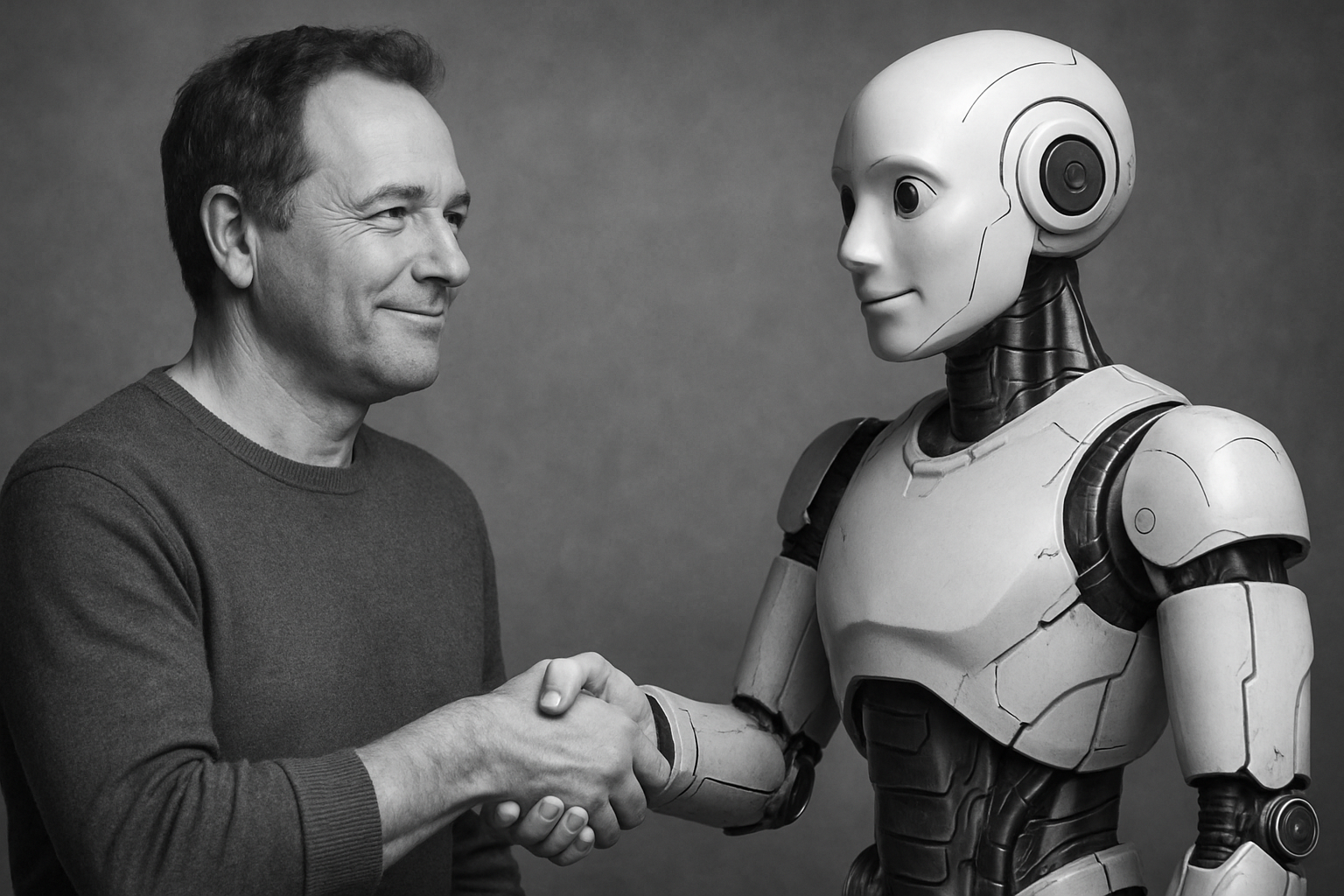This is part one in a series of blogs on Artificial Intelligence and its impact on Service Design, UX Design, Visual Design and User Interface Design.
This blog focuses on the question: how could the use of AI enrich the various design disciplines from the viewpoint of value driven design?
Three ways AI helps designers add value
Value-driven design helps product owners and designers to create a product or service that is valuable to all its stakeholders. It can benefit significantly from the use of AI in the fields of Service Design, UX Design, UI Design and Visual Design. Here are the three main points on how AI can be applied within these domains.
More relevant interaction based on the individual context of users
By applying AI algorithms, an application, platform, or digital product can analyse user behaviour and learn from interactions. This enables it to make relevant recommendations, present targeted content and adapt interactions.
AI enables designers to create personalised, context-aware and intuitive interfaces that match users' individual needs and preferences. This results in an enhanced user experience and increased user value.
For example, imagine a mobile app that offers trip planning and flight booking. If it's an AI-driven system, it can apply AI algorithms to analyse the user's behaviour, such as preferred destinations, travel dates, and budget. The system could then make suggestions for flights and hotels tailored to the user's individual needs, as well as send timely notifications about price changes or flight offers based on the user's previous interactions with the app.
A more advanced example of context awareness in Visual Design could be that an app or website learns the user's preferences and adjusts the visual style accordingly. For example, if a user frequently watches videos about art, the system can improve the visual presentation of art-related content by placing the emphasis on images, gallery styles, and colours that match art-related topics.
Data-driven insights
Related to the above, AI enables designers to gain valuable insights from large amounts of user data. By analysing user behaviour, feedback and other relevant data sources, AI can identify patterns, trends and needs that might otherwise be overlooked by the shear amount of data a human would have to go through in order to reach some conclusions.
Example: Imagine using an AI-powered health app to help users manage their nutrition and health. The app uses machine learning algorithms to analyse users' dietary habits based on their food intake and exercise.
AI is discovering a pattern where users who eat fast food frequently have a higher risk of weight gain and other health problems. Instead of just providing standard advice on healthy eating, AI can provide personalised suggestions for healthier alternatives and meal plans, taking into account each user's individual taste preferences and nutritional needs.
Thanks to AI, the app can provide valuable insights that significantly improve the user experience. Not only do users get more accurate and relevant recommendations, but they are also incentivised to make healthier choices. In this way, AI contributes to the creation of valuable designs that have a positive impact on the health and well-being of the users.
AI demonstrates its value by providing in-depth analysis and insights that would otherwise be difficult to achieve with traditional methods. These insights allow designers to better anticipate user needs and optimise their designs to deliver a more meaningful and impactful user experience.
More time for strategy, creativity and empathy
AI can support designers in making the design process more efficient. Using AI-based tools, designers can apply automation and machine learning to simplify repetitive tasks such as generating design concepts, creating wireframes, and optimising design elements. This frees designers from time-consuming work and allows them to focus on more strategic and creative aspects of the design process, ultimately resulting in more valuable designs.
By combining value-driven design with the capabilities of AI, designers can better serve the users' needs and expectations. However, it’s important to note that AI is not a replacement for human creativity and expertise. Rather it’s a powerful tool that supports and enriches designers in their pursuit of value-driven design solutions.
Why make things more difficult than they need to be?
The paragraph you just read is the answer from ChatGPT, one of the best-known AI tools, to this prompt: "Dear ChatGPT, could you answer this question; What are the three most important points to note if AI is going to be applied within the fields of Service Design, UX Design, UI Design and Visual Design and make the connection between value driven design, please?"
We also asked for some concrete examples, to illustrate the points raised by ChatGPT, to enliven the text a bit. And we were not disappointed with the result.
AI is a hot topic these days. Many bright minds are currently studying AI, and the media are full of it. From utopian scenarios with unlimited possibilities to grave concerns about where we are heading as a species, you’ll have read all sorts of opinions by now.
Fact is that developments in AI are moving fast. Very fast.
As designers, we will have to form an opinion for ourselves
We constantly strive for solutions that create real value for users and anything that can help us is welcome, right?
We conduct a lot of research and try to learn as much as possible about users’ behaviours and needs. Gathering this information is time consuming, as is the follow-up analysis and scrutiny of the data. Both rely heavily on the human capacity for fact finding and pattern recognition. Areas where AI easily outperforms most organic brains. Combine this with the application of real-time input to adapt the interface to the user’s context, and AI can really lift the field of design to the next level.
In short, from the answers given by ChatGPT, we can conclude that AI will open up new avenues for designers, some of them unthought-of at this point in time.
It paints an optimistic picture, with many opportunities.
It also indirectly demonstrates how an AI tool can already very easily perform the work of a human.
In our next blog, we’ll look to the possible downsides of developments within AI, and the implications for designers.





